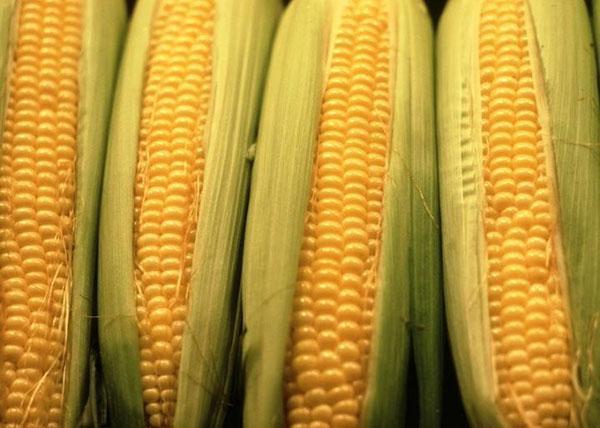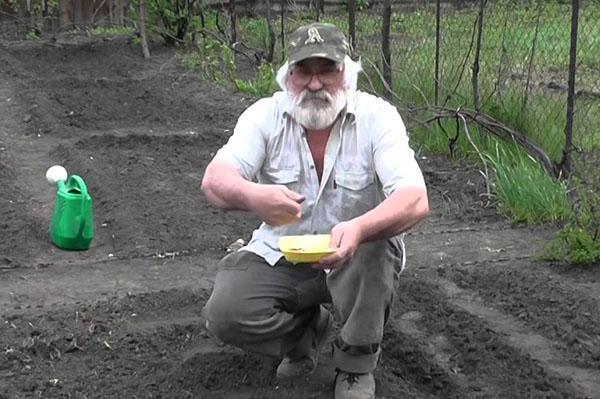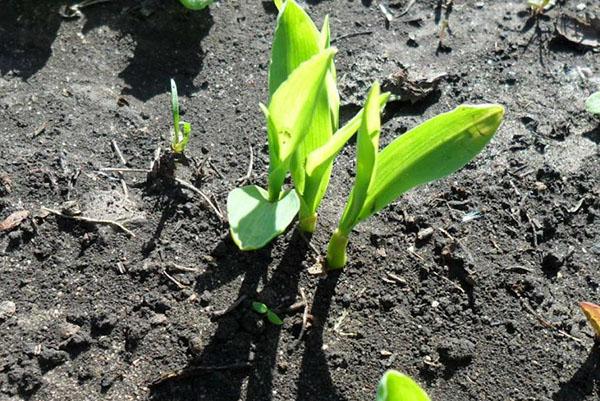Planting, growing and collecting corn in the country
 Sweet corn is an annual plant with yellow, white, or two-colored petals. The long growing season starting after planting should take place in a frost-free environment. Since maize is wind-pollinated, it is best to plant it in large blocks rather than single rows. The presence of early, middle and late varieties has a positive effect on the amount of the crop. If you miss the optimal harvest time, the sugar will convert to starch and the corn will wither quickly.
Sweet corn is an annual plant with yellow, white, or two-colored petals. The long growing season starting after planting should take place in a frost-free environment. Since maize is wind-pollinated, it is best to plant it in large blocks rather than single rows. The presence of early, middle and late varieties has a positive effect on the amount of the crop. If you miss the optimal harvest time, the sugar will convert to starch and the corn will wither quickly.
Landing

We do not recommend planting seeds indoors for subsequent transplanting into open ground.
Two weeks later, after the end of the spring frost, you can sow seeds. Check that the soil temperature is at least 15 degrees for successful germination (18 for very sweet varieties). In cold areas the ground should be lined with black plastic to keep warm, and the corn should be planted through the holes made.
The seeds should be located at a depth of about 3 cm and at a distance of 10-15 cm from each other. Leave 70-90 cm between rows. For full pollination, you must properly plan this area of the site. Do not plant two long rows. Instead, arrange the plantings in blocks of at least 4 rows.
You can also add fertilizer directly at the time of planting, which will cause the corn to grow rapidly. However, if you are confident in the fertility of the soil, you can skip this step. Water all seed plots liberally.
Care
 When your plants are 7-10 cm high, thin them out so that the distance between the stems is 20-30 cm. Be careful not to damage the roots when weeding.
When your plants are 7-10 cm high, thin them out so that the distance between the stems is 20-30 cm. Be careful not to damage the roots when weeding.
The soil should be moist and well drained. In dry regions, make sure the corn is watered abundantly (roots are close to the surface) based on 22 liters of water per sq. m. Mulching will help slow down the evaporation of moisture, which will greatly facilitate plant care.
Pests
The main danger for corn is:
- raccoons;
- spotted leaf beetles;
- earthen fleas;
- caterpillars.
Corn should be checked periodically for pests. If caterpillars or flea beetles are found, process with available means. The sooner you get rid of the insects, the better your harvest will be.
Collection and storage
 Cleaning should begin when the brushes turn brown and the ears start to swell. The kernels should be at the stage of milky ripeness. Pull your ears down to release the stem.
Cleaning should begin when the brushes turn brown and the ears start to swell. The kernels should be at the stage of milky ripeness. Pull your ears down to release the stem.
 Sweet varieties lose their flavor soon after harvest. Therefore, get ready to eat corn right away, or canning it. It also lends itself well to freezing. Leave a few heads of cabbage of the variety you like on the stems for full ripening. Remove them in the fall after the stem is dry. The harvested crop is well stored in a ventilated dry place. Use seeds for planting in the spring.
Sweet varieties lose their flavor soon after harvest. Therefore, get ready to eat corn right away, or canning it. It also lends itself well to freezing. Leave a few heads of cabbage of the variety you like on the stems for full ripening. Remove them in the fall after the stem is dry. The harvested crop is well stored in a ventilated dry place. Use seeds for planting in the spring.
Recommended varieties
There are 3 types of sweet corn:
- normal;
- with a high sugar content;
- super sweet.
Each contains a different level of sucrose, which alters the flavor and texture of corn. Sweeter varieties will retain their sweetness longer after harvest.
 Here are some examples:
Here are some examples:
- Iochif is a medium-fruited variety with a normal sugar content (yellow).
- Silver Queen - has normal sugar content and good disease resistance (white).
- Challenger is a super sweet variety with high yields (yellow).
- Pristine - high sugar content, good taste (white).
There may be other varieties of sweet corn used in your area. For a summer cottage, it is preferable to choose zoned varieties. This is the only way you can get a good harvest and enjoy the taste of your own sweet corn.